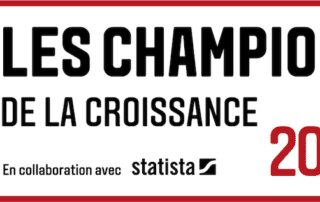After a beta test last July, Microsoft announced the launch of SharePoint Server on-premises 2019 at the end of the year. What should we expect? The technology firm promises a consistent experience, an enriched platform and a hybrid system directly integrated with SharePoint Online. This is something that its 400,000 enterprise customers can look forward to. Users, from January onwards, will benefit from easier collaboration, wider distribution of information, process automation and a simplified interface. In the meantime, discover all the changes point by point.
The "On-premises" concept: in SharePoint 2019, it's easier to bridge the gap between an "On-premises" server and a " cloud " server; this is known as a hybrid environment.
What's new in each category of SharePoint 2019:
Microsoft has not only modernized its tool, but has enriched it with numerous functionalities that are divided into four families: Share & Work Together, Inform & Engage Employees, Transform Business Processes and IT & Developper Value.
Share & Work Together
Sharing documents will be simplified and uploaded files can be up to 15 GB.
On their side, users will be able to work in offline mode. Files will be automatically synchronized to SharePoint once the computer is reconnected. If they miss, users will be able to retrieve documents from the recycle garbage can without going through the admin team.
An effort has been made on communication sinceAccess Service will offer a messaging functionality.
Finally, the display will be more refined, in accordance with the new graphic line chosen.
Inform & Engage Employees
Upon first login, users will be presented with a personalized, fluid and comprehensive SharePoint Home page.
The new Communication Sites and Team Sites services allow the creation and enrichment of sites in complete autonomy. Each user will be able to quickly create his site if it is a personal site, a team site or a communication site.
Please note, however, that these features do not include Hub or Microsoft Teams.
Transform Business Processes
Again, creation and integration is self-service. In a few weeks, employees will be able to create standalone applications from the PowerApps Service tool (is it really PowerApps Service? we're used to just saying PowerApps). They will then be able to connect them to SharePoint, integrate the Cloud services and share their creation within their company.
In the same vein, users will have enough flexibility to create a site from any application.
IT & Developer Value
SharePoint developers and administrators have something to look forward to as well. SharePoint has been enhanced with the SPFx framework that makes it easier to deploy modern applications.
Another new feature is security. With SMTP mail server authentication, SharePoint can be integrated into highly secure environments. PowerShell also helps to define the different login data.
On the "user path" side, two new features are worth mentioning: the hybrid configuration wizard is launched from the central administrator page and all administrators will have access to the target documentation.
A change also occurs at the technical level since SharePoint 2019 no longer depends on IIS 6 APIs, but on IIS 7+ APIs in order to remain compatible with future versions of Windows Server. Characters are multiplying and diversifying: urls can be up to 400 characters long and special characters are integrated.
What are the requirements for companies?
If you want to upgrade to the 2019 version of SharePoint, you'll need a few technical provisions:
- The hardware: a 64-bit, 4-core processor, 16GB of RAM, 80GB of storage for the system and 100GB for secondary storage.
- Systems: you must have at least the Windows Server 2016 or 2019 (Standard or Datacenter) and SQL Servers 2016.
All of these new features represent many benefits for administrators and users alike. Before you rush into 2019, take the time to ask yourself a few questions. Indeed, if you want to switch to the new SharePoint, you will have to migrate your system. At that point, we recommend that you question the move through these three questions: What are you willing to give up? What will you have to migrate? What do you want to create? If you want to be accompanied, contact us!






